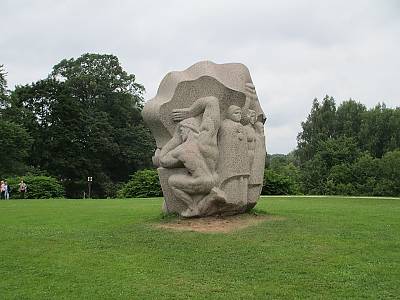- Latvia



Turaida Museum Reserve in Latvia

© “Folk songs sculptures park in turiada, latvia” by Avi1111 is licensed under CC BY-SA 3.0
1. ICH domains
Oral traditions and expressions, performing arts, rituals, festive events, traditional craftsmanship
2. Short description
The Turaida Museum Reserve in Latvia has been active in the area of safeguarding intangible cultural heritage for more than 35 years. Among other initiatives, the museum reserve continually promotes Latvian folklore and traditional culture, organises Latvian celebrations, especially summer solstice, and promotes Latvian traditions, customs and rituals, and skills in ancient crafts. It also hosts the events of the international folklore festival ‘Baltica’ and is home to the ‘Folk-song park – Folk-song hill and Folk-song garden’. In addition, the museum remembers the century-old legend of Maija, the ‘Rose of Turaida’, the Latvian girl described in sorrowful legends. Flowers always cover her memorial tomb, and serve as a sign of the invincible power of love.The reserve serves as archives for intangible cultural heritage, housing archival material on a recently inscribed tradition - local craftsmanship of producing wooden sticks that were historically used for tourism and became as a tourism symbol of the municipality. These are still being produced and sold today.
The reserve also organises activities around blacksmithing, whereby a blacksmith shows visitors around the premises of the smithy, acquaints visitors with ancient and present-day tools, recounts the secrets of the blacksmith’s craft, as well as demonstrates forging skills.
Further information:
The following links (all in English) give more in-depth info to the museum reserve:
http://www.turaida-muzejs.lv/home_en1/
http://www.latvia.travel/en/news/turaida-museum-reserve-receives-highest-award-preservation-intangible-cultural-heritage-europe
Folk Song Hill and Folk Song Garden:
http://www.turaida-muzejs.lv/exhibitions/folk-park-mountain-folk/creating/
The Turaida Museum Reserve is attentive to avoiding commercial misappropriation of intangible cultural heritage in Latvia and managing tourism in a sustainable way. Specific effort is made to find a balance between commercial interests, public administration and the cultural practitioners, such that the meaning and purpose of the folksongs, legends and skills and crafts are not distorted in meaning for the community concerned. It broadly responds to SDG 17 on fostering partnerships between governments, the private sector and civil society, and SDG 4 on promoting lifelong learning as well as SDG 11 in using culture to promote an inclusive and resilient city and community.
4. Questions for reflection
One of the dangers facing the Turaida Museum Reserve is to be careful its activities do not lead to over-commercialisation or to unsustainable tourism that may put at risk the intangible cultural heritage concerned. UNESCO’s Ethical Principles for Safeguarding Intangible Cultural Heritage also clearly state that transparent collaboration and mutual respect in interactions between States and communities, groups and where applicable, individuals, is imperative in the creation, safeguarding and transmission of intangible cultural heritage. To this end, action must continually be taken to ensure that communities, groups and individuals concerned are the primary beneficiaries of any tourism associated with their own intangible cultural heritage, and to ensure that the viability, social functions and cultural meanings of the heritage are not diminished or threatened by such tourism. Moreover, tour guides should ideally be drawn from communities concerned or be working closely with them when giving information on intangible cultural heritage practices. In addition, if quality accreditation is done through State agencies rather than by communities themselves, it could have a negative effect on intangible cultural heritage safeguarding.
What makes this experience a positive example of effective safeguarding of ICH?
What do you see as the risks to this approach of safeguarding ICH and how could they be overcome? What other possible concerns can you think of that should be addressed?